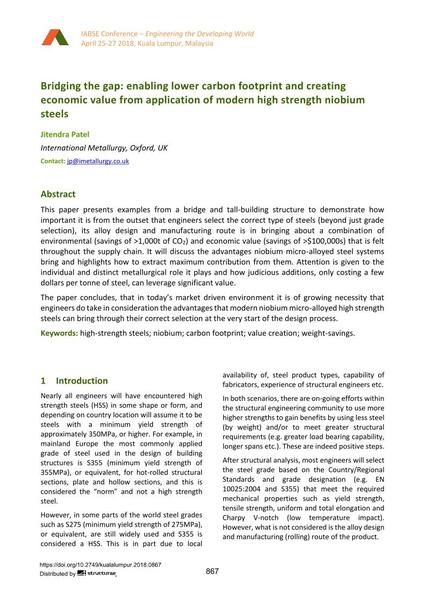Bridging the gap: enabling lower carbon footprint and creating economic value from application of modern high strength niobium steels

|
|
|||||||||||
Détails bibliographiques
| Auteur(s): |
Jitendra Patel
(International Metallurgy, Oxford, UK)
|
||||
|---|---|---|---|---|---|
| Médium: | papier de conférence | ||||
| Langue(s): | anglais | ||||
| Conférence: | IABSE Conference: Engineering the Developing World, Kuala Lumpur, Malaysia, 25-27 April 2018 | ||||
| Publié dans: | IABSE Conference Kuala Lumpur 2018 | ||||
|
|||||
| Page(s): | 867-874 | ||||
| Nombre total de pages (du PDF): | 8 | ||||
| DOI: | 10.2749/kualalumpur.2018.0867 | ||||
| Abstrait: |
This paper presents examples from a bridge and tall-building structure to demonstrate how important it is from the outset that engineers select the correct type of steels (beyond just grade selection), its alloy design and manufacturing route is in bringing about a combination of environmental (savings of >1,000t of CO₂) and economic value (savings of >$100,000s) that is felt throughout the supply chain. It will discuss the advantages niobium micro-alloyed steel systems bring and highlights how to extract maximum contribution from them. Attention is given to the individual and distinct metallurgical role it plays and how judicious additions, only costing a few dollars per tonne of steel, can leverage significant value. The paper concludes, that in today’s market driven environment it is of growing necessity that engineers do take in consideration the advantages that modern niobium micro-alloyed high strength steels can bring through their correct selection at the very start of the design process. |
||||
